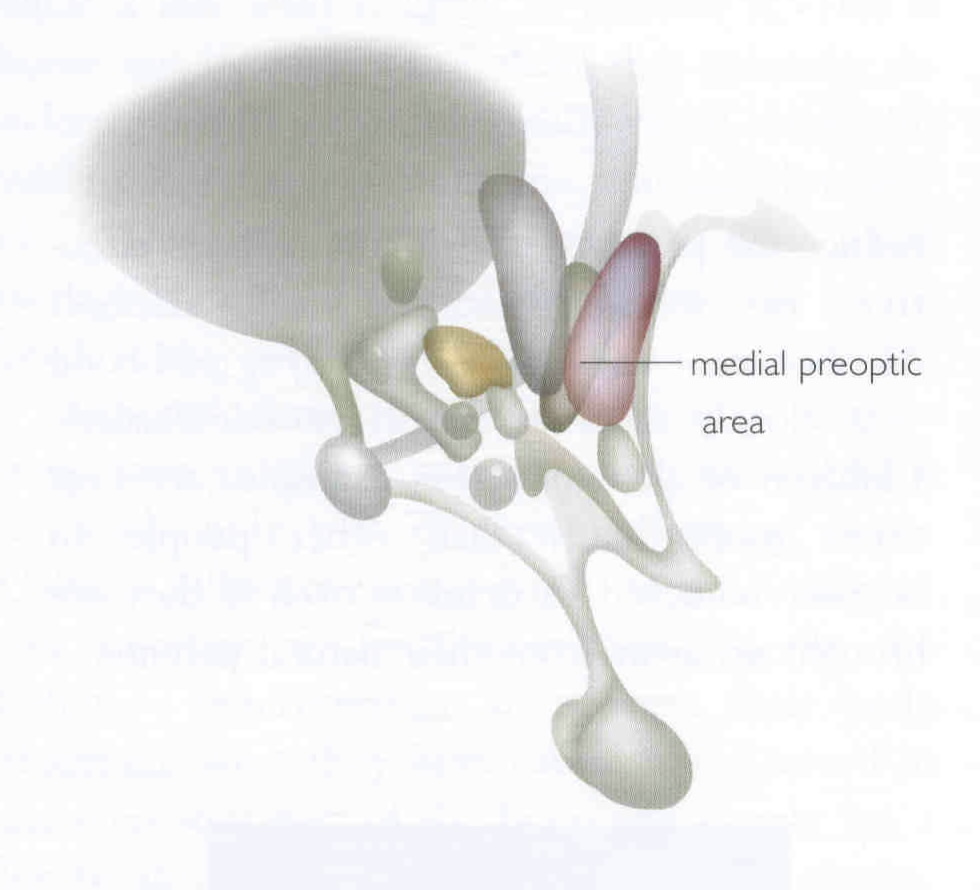
Brain. 1. A subcortical group of nuclei in the forebrain that serves a. the limbic system, b. the autonomic nervous system (see FIGHT-OR-FLIGHT), and c. the endocrine system. 2. A thumbnail-sized neuro structure that organizes basic nonverbal responses, such as aggression, anger, sexuality, and fear.
Usage: Giving input to--and receiving output from--the limbic system, the hypothalamus mediates diverse nonverbal signs associated with emotion and psychological arousal.
Evolution I. The hypothalamus has deep evolutionary roots in the chemical sense of smell (see AROMA CUE).
Evolution II. As the forebrain's main chemical-control area, the hypothalamus regulates piscine adrenal medullae, chemical-releasing glands which, in living fish, consist of two lines of cells near the kidneys. The adrenal medullae pump adrenaline into the bloodstream, from where it effects every cell in the fish's body. (N.B.: In humans, adrenaline speeds up body movements, strengthens muscle contractions, and energizes the activity of spinal-cord paleocircuits.)
RESEARCH REPORTS: 1. Pathways
involved in oral and genital functions "converge in that part of the
hypothalamus in which electrical stimulation results in angry and
defensive behaviour" (MacLean 1973:44). 2. In higher
vertebrates, the olfactory system and the hypophysis [i.e., the pituitary gland
(which is linked to the hypothalamus)] "are derived from a single patch of
embryonic [neuro]ectoderm" (Stoddart 1990:13). 3. The
hypothalamus mediates many nonverbal behaviors through reticular nuclei in the
brain stem (Guyton 1996).
Neuro-notes. Regarding hypothalamic
nuclei and nonverbal signs, a. the dorsomedial nucleus stimulates
savage behavior; b. the posterior nucleus stimulates the
sympathetic nervous system; c. the preoptic area houses the sexual
dimorphic nucleus; and d. the anterior nucleus stimulates the
parasympathetic nervous system (Fix 1995; see REST-AND-DIGEST).
Copyright 1998 -
2016 (David B. Givens/Center for Nonverbal Studies)
Detail of
illustration from Mapping the Mind (p. 70; copyright Weidenfeld & Nicolson, London, 1998 [the medial preoptic area governs male sex drive])